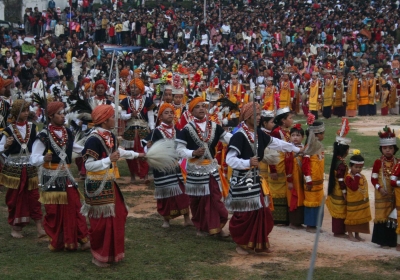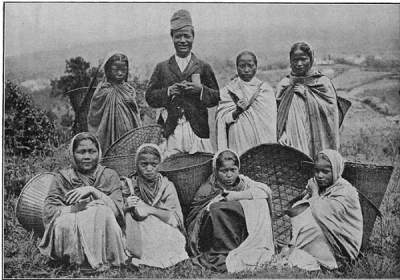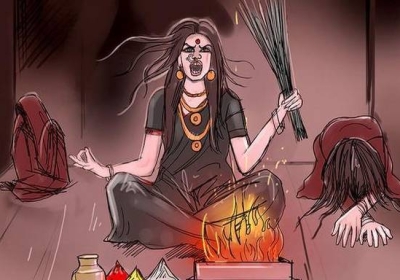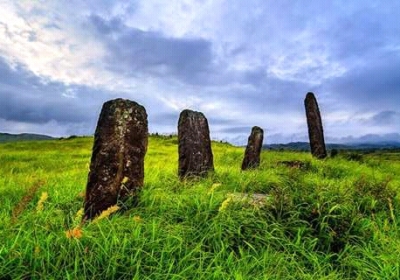Khasi Heritage: Parable and Allegory
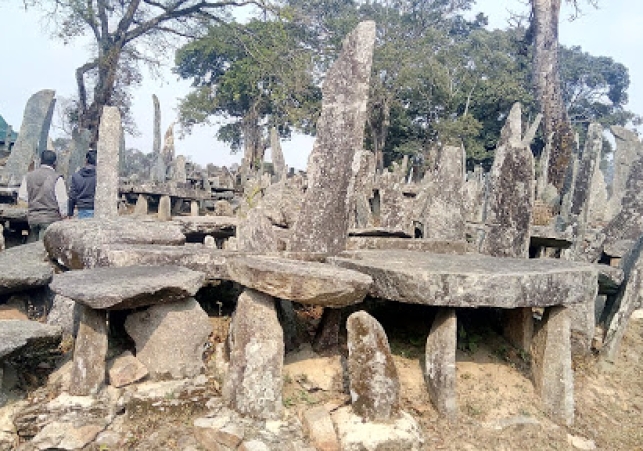
The observation and analysis that led to the prediction is the inherent aptitude of certain local people who inherited knowledge from their ancestral families or shamans or mere farmers, who knew the study of nature and the astronomical positions in relation to the eggs of the toads. The indication may not be precise on the actual events, but the precise assessment and scrutiny, clarity of natural behaviour was never an assumption, but profound knowledge of folk sciences. Some of the specific interpretations of those natural phenomena are ‘This year, there will be major political changes in the territory or in far off western nations or the death of a prominent national leader or foreign political personality, and such types of statements’. The prediction might not be with specific names, but the peculiar occurrences matched the interpretations at all times. The Tiehnongbah is there to stay, but the spectacular landmark of an ancient knowledge system is vulnerable to the rapid onslaught of modern civilisation, religious conversion and negligence and ignorance of the ancient folk wisdom.
There are some traditional belief systems in Khasi society that are associated with an ancient knowledge system, while others are imaginations and contemporary assumptions of trivial and baseless rationality. The gravity of such a knowledge system must be evaluated and justified with logic, broad-based knowledge of folklore and contemporary science and balanced judgement of literal narratives. The mythology of Sohpetbneng as the tale of the genesis of mankind was substantiated by archaeological exploration by Dr Marco Mitri and his team on the traces and discovery of ancient settlements and artifacts. The ancient human settlement and civilisation is proven by science, but the descendants of the human race from heaven could not be perceived as reality, because it is a metaphor of social interpretation of the community that needs proper study and analysis to conform with reality.
The myths and legends of every culture of the human race throughout the world has a variation of stories that consist of certain similarities of common phenomena, like heaven and celestial bodies, solar and lunar systems, seasons and climatic conditions, lightning and earthquakes, floods and droughts, mountains and rivers, forests and grasslands, rock and soil, birds and animals, fishes and reptiles, human being and supernatural beings, so on and so forth. It may not be necessary to delve into the folklore of other cultures and a relevant reference could be related to Khasi folklore to bring about the universal understanding of nature and humanity. There was a flood in Jewish and Biblical Christian myths and a flood in Khasi myth related to the loss of divine knowledge and the onset of ancient sacred chronicles and scriptures. There was a Big Bang theory by a Belgian cosmologist and Catholic priest, Georges Lemaître, (1894-1966), as well as the Pur-Bthei theory by an exponent of Khasi cultural heritage and eminent scholar of geography, Dr Dondor Giri Nongkhlaw. The nomenclature ‘Pur’ means spread and ‘Bthei’ means explosion, in a literal context, which was formally interpreted by the author as ‘floating serial explosions’. The word Pur-Bthei over a period of time transformed into the word Pyrthei, which currently denotes the world in Khasi language. The theory of the structure of the universe in which Earth is assumed to be at the centre of it all developed by Ptolemy of Alexandria (2nd century ce) related with the geocentric model of the solar system; and Ka Ri Shong Pdeng Pyrthei was coined by an eminent historian and expert on Khasi heritage, Mr. L Gilbert Shullai. The term Ka Ri Shong Pdeng Pyrthei, literally means a nation located at the centre of the world, and in the definition of Mr. L Gilbert Shullai, referred to the Khasi nation precisely at the apex summit of the Sohpetbneng peak. It is interesting to note that Ptolemy’s theory shares similarity with the Khasi Creation myth that the earth is the pivotal element instrumental in the cosmic creation of all matters in the universe.
Essentially, the ancient knowledge of the Khasi ancestors had already perceived and established that the world was round like a globe, when the myth narrated that Mother-Earth separated them from the light area and the dark area of the universe. The solar particles of the sun dripped into the tail feathers of the peacock and created sparkling fluorescent spots of ocellus. The Khasi cosmos families of nine-huts or Khyndaitrep of the cosmic sphere could be perceived as the nine planets and the temporal seven-huts or Hynñiewtrep could be perceived as the seven continents. According to the theory of Pur-Bthei, the initial orgasms of a floating serial explosion germinated into plants and vegetation, grew into fruits and flowers, and bore seeds for regeneration. The subsequent orgasms, sprouted maggots and worms that were formed from plants and soil, then diversified the growth into crawling and flying insects, then evolved into reptiles, diversified into vertebrate and invertebrate creatures, then avian and amphibians and several other heterogeneous evolution of animals and mammals and various prehistoric and supernatural creatures. In the Khasi creation myth, human beings are mysterious and distinctive supernatural beings that could have descended the intangible souls from the cosmos and merged with the tangible matter from the earth.
The Khasi folklore about the genesis of mankind indicates that the souls of the sixteen spiritual beings descended from the cosmos and were merged with tangible substances of the earth created by the typical biological system, which is different from all other creatures. After the infringement of the divine covenant, that is the collapse of Diengiei and the detachment of the golden vines or celestial umbilical cord from Sohpetbneng, the nine celestial beings remain in their spiritual form and the seven temporal beings are the souls that merged with the tangible human form. Another interesting aspect of the Khasi Creation myth that percolates in the customary practices is the Dwar U Blei or the threshold to the divine abode. The idea of the divine is beyond the mystery of the cosmos that the human intelligence could never fathom. When a person dies, it is said ‘Bam Kwai ha Dwar U Blei’ literally meaning that sharing betel-nut at the abode of God. In Khasi parlance, sharing a betel-nut is the most honourable gesture of mutual respect and solidarity in society, and the real encounter with the divine is the ultimate, while it is sufficient enough for every soul to have eternal rest at the threshold to the divine abode.
Risa kynthei shynrang, khyllung khynnah ki ia saham;
Byllai ki Khanatang, shibyllien ki puriskam.
Ka sngi u bnai ki khlur, ryngkat metbneng ba ishyrkhei;
Eitding lynter ki pur, satlak mariang te ba ki bthei.
La man ki ksaiñ ki wieh, ki khñiang ki ksiah ba la syrtap;
Kaweh ki thapbalieh, tda ki thliem kynthah ki ngap.
Seiñlum ne ki seiñum, ki dohlun ne ki japieh;
Ka bih ka sni ki kbum, la daitmaw kynthih kyrkieh.
Ki sim ki doh ki her, sdien pyrdet ki labadur;
Ki han ki syiar kynther, dkhoh lymbit mynmiet ki tur.
Lynñiar ki shrieh ki tngaw, la byrngem ki khla ki dngiem;
Hati kyndad kyrkaw, sier ki bthong ba ki


